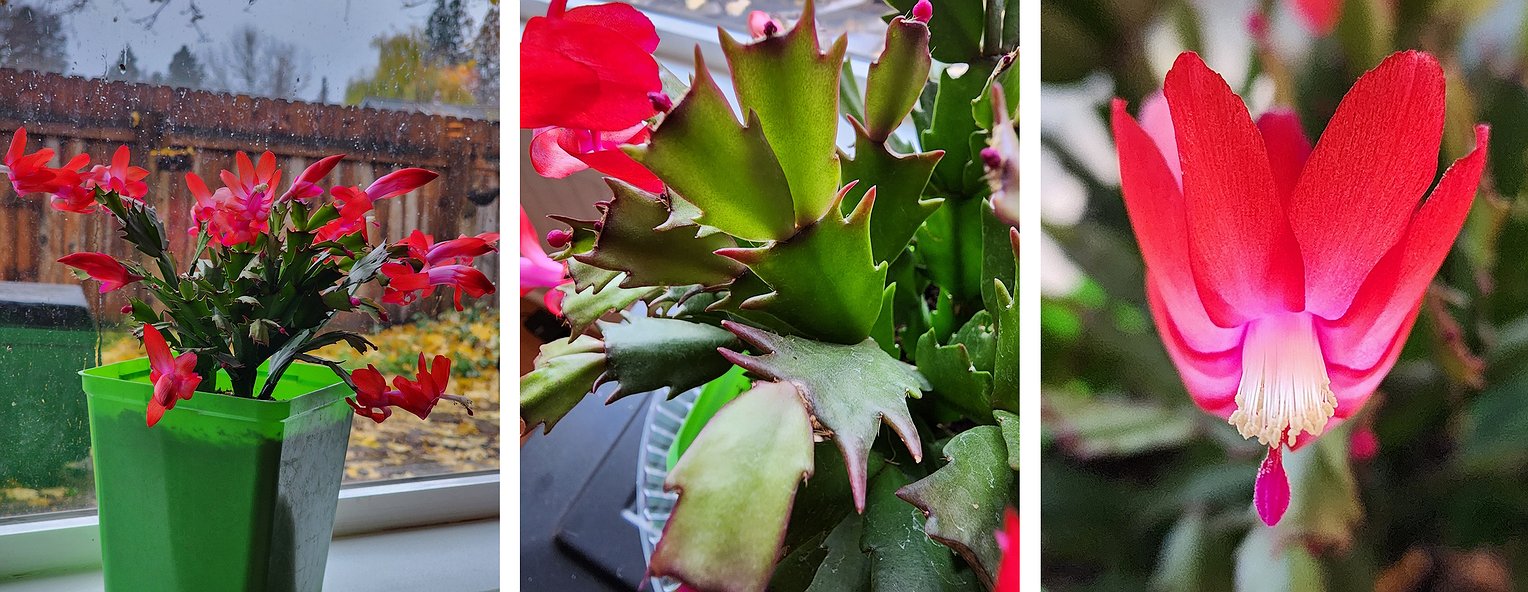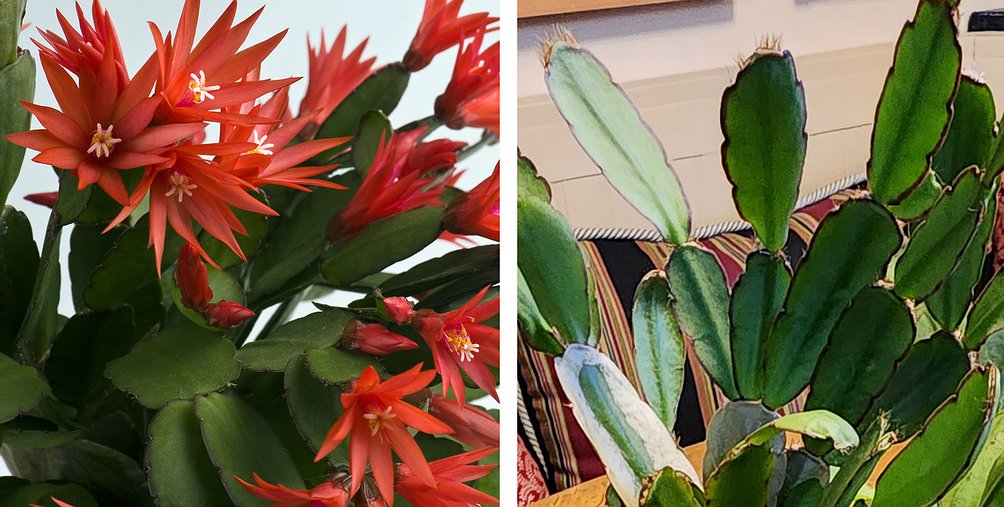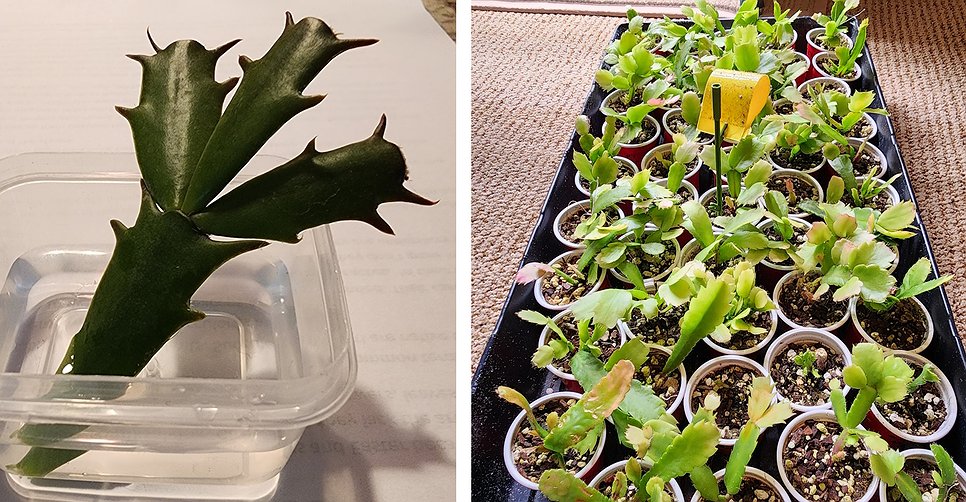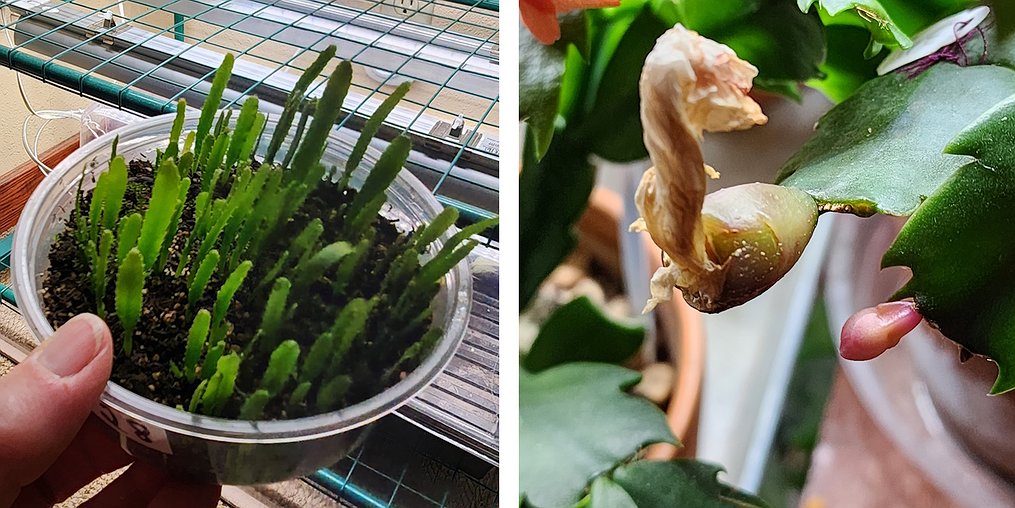Holiday cactus 101
The Christmas cactus (genus Schlumbergera) is one of the most popular plants to give and receive during the holiday season. And for a good reason — its cheery flowers of many colors can brighten even the grayest winter days.
I recently had the pleasure of visiting with my fellow Idaho Master Gardener, Brenda H., who, by all accounts, is the Queen of Holiday Cacti. Brenda has a vast collection of Christmas cacti that bloom throughout the year in stunning colors. She also grows many of her plants from cuttings and seeds, which requires carefully cross-pollinating the plants with Q-tips!
But hold on, if it’s a Christmas cactus, why do some plants bloom at times other than December? The answer is simple: It’s not a true Christmas cactus but, more likely, one of its holiday cousins, like a Thanksgiving or Easter cactus. Still, the three distinct types of Schlumbergera are commonly referred to as “Christmas cactus.”
What plant is this?
This easy-care houseplant has been confusing plant lovers for years. And I mean years. Some plants have been known to live 75 years or more. I have one that is close to 30 (and it will probably outlive me!).
To begin with, plants in the Schlumbergera family aren’t true cacti; they are succulents native to the tropical rainforests of Brazil.
Schlumbergera are classified as epiphytes, a type of plant similar to orchids, moss and ferns, which grow on top of other plants. Unlike desert cacti, these houseplants require more water and humidity to thrive.
There are three common types of Schlumbergera: the Thanksgiving cactus, Schlumbergera truncate; the Christmas cactus, Schlumbergera x buckleyi; and the Easter cactus, Schlumbergera gaertneri.
So, how can you tell which holiday cactus is which? While they're all similar in appearance, each has its defining characteristics.
The most definitive way to identify a Schlumbergera is to note the shape of its stem segments (clades), the shape of the flower and, to some extent, the color of the pollen. Blooming time isn’t a good guide since plants may rebloom more than once a year.
The fall-blooming Thanksgiving cactus (Schlumbergera truncate) is the most common of the holiday cactus plants and is widely sold as a Christmas cactus. Its clades have sharp, pointed serrations along the margin, which is why it’s sometimes called a crab-claw cactus. The flowering stems grow upright and arch over. The flowers are elongated, and most have yellow pollen on the anthers. Flower colors include white, pink, orange, yellow, red and magenta.
The clades of a true Christmas cactus (Schlumbergera x buckleyi) have no sharp points and are scalloped — similar to the shape of a Christmas tree cookie-cutter. Flowering stems often hang downward, and while its flower is also elongated, the pollen color is pinkish purple. Most Christmas cacti bloom from late December into January with magenta flowers.
The rarer Easter cactus is the easiest to identify due to its distinctly smooth, rounded clades that sport tiny bristles on top. Once the days lengthen, Easter cacti set buds with star-shaped flowers and blooms in various colors from March to May.
Holiday cactus care
Holiday cactus plants require little care and are usually unaffected by pests or diseases, making them good houseplants for everyone, even those with “brown thumbs.”
• Light: All varieties thrive in bright, indirect light from an east or north-facing window. Avoid direct sunlight to prevent leaf burn (remember, this rainforest plant lives under a shaded canopy).
• Temperature: Schlumbergera thrives best at around 68 degrees and will flower for up to six weeks at this temperature.
• Water: Water every one to two weeks, allowing the soil to dry a few inches below the surface. Avoid waterlogging or allowing plants to stand in water, which can cause root rot. Plants thrive in a humid environment; misting and adding pebbles to the plant saucer helps maintain that.
• Fertilize: Once blooms fade, fertilize once a month through the summer using a water-soluble houseplant fertilizer (always follow the instructions on the product label).
• Repotting: Schlumbergera prefers being slightly pot-bound and only needs repotting every few years. Repot after blooms have faded, using a 70/30 mix of potting soil and perlite.
In the spring, move your plants outdoors to dappled shade. In June, pinch back stems to encourage more flowers. Once temperatures drop into the 40s, it’s time to bring them back inside.
Dormancy and reblooming
Schlumbergera requires a dormant period for reblooming. To encourage this, reduce water and move the plant to a cool (50-degree), low-light location about six to eight weeks before the desired bloom period.
Each year in September, I move my Thanksgiving cactus into the garage to ensure Thanksgiving blooms.
Flower buds will form within three to four weeks of dormancy. Once the buds are set, you can return the plant to bright light conditions.
An easy gift to give
Holiday cactus plants are easy to propagate, making them perfect for sharing! The clade segments propagate equally well in water or potting mix. Cut, pinch or twist a two or three-piece segment at the joint between the clades and allow it to callous overnight.
Roots form in about eight weeks but will develop quicker if the cuttings are kept warm (70 to 75 degrees). The segments can be potted into individual containers when the roots are about an inch long.
• To propagate in water, add about 2 inches to a small jar and place your stem segment in the water. Small pebbles in the jar's bottom help stems stay upright. Add water as needed to keep the stem submerged.
• To root in potting mix, fill a small container with moist potting soil (70/30 mix noted above) and push segments about an inch into the soil. Several cuttings can be placed in one container and spaced about an inch apart. Keep the soil moist and in a warm location. Covering the container with a plastic bag helps create a humid environment.
Holiday cacti bring cheer to winter with their bright blooms — a true holiday delight! They can blossom year after year with simple care, adding a festive touch to your home. Best of all, they’re easy to propagate, so you can share the holiday spirit by gifting new plants to friends. Happy Holidays!
• • •
Candace Godwin is a certified Idaho Master Gardener, Garden Consultant, and owner of The Coeur d’Alene Coop (thecoeurdalenecoop.com) that offers seasonal plant sales and articles on gardening and raising backyard chickens.
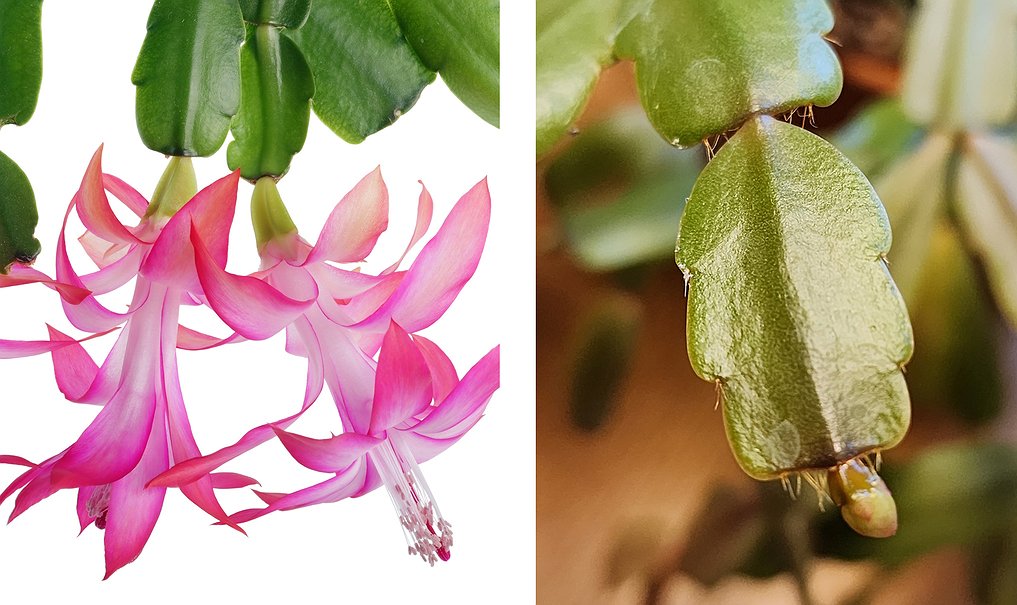 The blossoms of a true Christmas cactus hang downward from the plant, and the clades are scalloped or Christmas tree-shaped, without sharp points.
The blossoms of a true Christmas cactus hang downward from the plant, and the clades are scalloped or Christmas tree-shaped, without sharp points.









